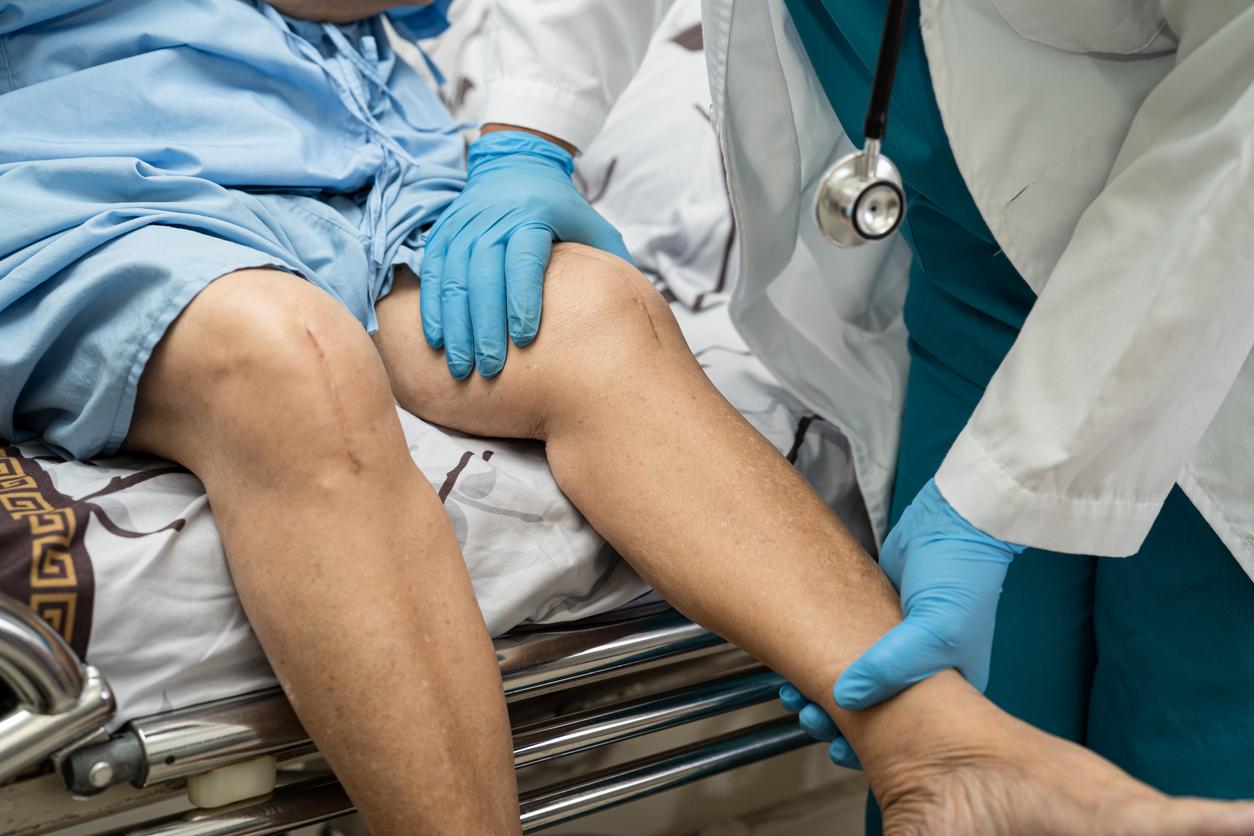Three injectable corticosteroids are out of stock. The rheumatologists union is sounding the alarm. The alternatives are expensive and less effective.

Rheumatologists are angry. Three injectable corticosteroids are simultaneously out of stock and in tension of supply. Intended to treat inflammatory joint pain, they have only imperfect alternatives. The National Union of Rheumatologists (SNMR) therefore sounded the alarm and predicted a “health crisis”. And for good reason: according to Inserm, one in two French people suffers from joint pain.
Corticosteroid injections are a valuable solution for patients in whom other medications have failed. Tendinitis, arthrosis, lumbago … The field of application is quite wide. Their benefit is considered insufficient by the Haute Autorité de Santé (HAS). But in fact, some patients derive real benefits in terms of pain reduction.
No more side effects
But now, several of these drugs are seeing their stocks dwindle: Hydrocortancyl (prednisolone), Diprostene (betamethasone) and Altim (Cortivazol). The latter is no longer even marketed by Sanofi. Contacted by Why actor, the laboratory explains that the production of the “third-party manufacturer” was interrupted due to contamination of the line. Impossible, under these conditions, to supply pharmacies. This situation is expected to continue since no recovery schedule has been defined. However, as the National Medicines Safety Agency (ANSM) underlined in 2009, it is the infiltration product the most used.
Dr Eric Senbel, SNMR president: ” The worst is for people who get sciatica from herniated discs or narrow back ducts. Today, the only alternative product is Hydrocortancyl. For some, infiltration is not possible. “
Alternative solutions exist, but physicians primarily refer to two specialties… which are also experiencing supply tensions. “As a consequence, when we do an infiltration and we only have a third or half of the products, we find ourselves in shortage,” explains Dr. Eric Senbel, president of the SNMR. The repercussions are far from trivial for patients who depend on these products.
The other options are more expensive and they also have more side effects. “If we cannot infiltrate a patient suffering from tendinitis, he is offered anti-inflammatory drugs, with digestive risks, physiotherapy, which costs much more, shock waves which are not available everywhere …” , illustrates Dr. Senbel. Patients must therefore be patient to find the drugs in the pharmacies around.
Dr Eric Senbel : ” Patients are asked to go on a blister hunt. They are going to make one, two, three, ten pharmacies. Then they call us back. We try to fit them between two dates. You can’t work properly in these conditions. “
Precedents from 2010
Faced with these tensions, the SNMR “decided to put the health authorities in front of their responsibilities”. The president of the union asks to meet the Ministry of Health and the High Authority of Health (HAS). Because shortages tend to repeat themselves. In 2010, the ANSM published a note on this subject. The three specialties were already difficult to obtain. Rebelote in 2012, on two of the three drugs. “What worries us is the size and duration of the shortage. You have to sit around a table to settle the matter in a lasting and efficient manner. “
The laboratories have already started working together with the health authorities, but also the manufacturers. For its part, the SNMR wants to go further. He asks that the production of molecules still in circulation be increased, in order to compensate for the disappearance of the Altim. According to Eric Senbel, Sanofi has promised to increase the production of Hydrocortancyl to fill the gap.
Stocks from neighboring countries could also be repatriated and certain marketing authorizations (AMM) extended, the union suggests. Thus, drugs which are not authorized for injections into the spine would be made available. “We cannot use them in theory, but in practice they present no risk,” says Dr Senbel.
.















